Congratulations to Shiming Liang (ROBO MSE) and Wanying Long (MEAM MSE)!
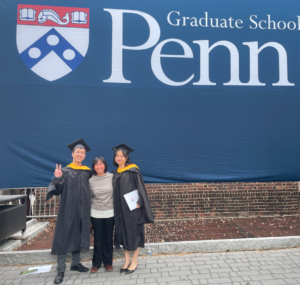
Congratulations to Shiming Liang (ROBO MSE) and Wanying Long (MEAM MSE)!

Come and see our presentations at ICRA 2024 in Yokohama, Japan! (May 13 – 17, 2024)
This past weekend mASV project leads Eric Sigg and Wanying Long demonstrated their new boat platform to the Northeast Systems and Control Workshop!
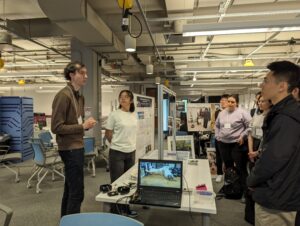
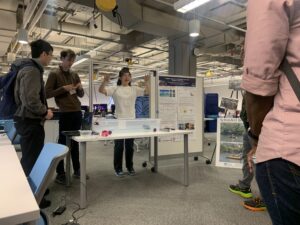
Congratulations to Ben Shaffer for receiving the prestigious NSF Graduate Research Fellowship!
Our miniature Autonomous Surface Vehicles (mASVs) were successfully taken on the road to the Roxborough Public Library. Wanying Long, Eric Sigg, Victoria Edwards, and Dr. Thales C. Silva shared with the local community all the steps necessary for building an mASV. At the end, participants were able to test drive the mASVs. Below are project leads Wanying Long and Eric Sigg interacting with students and a group shot of the mASV team.
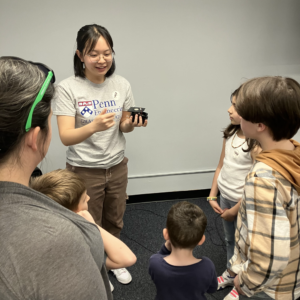
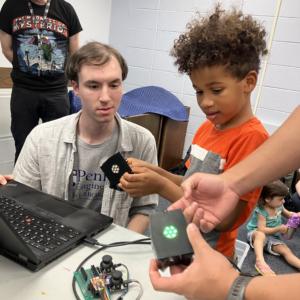
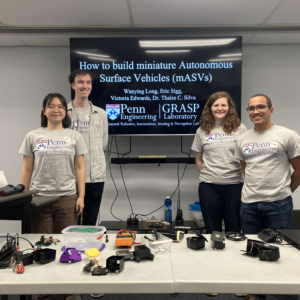

Come and see our presentations at IROS 2023 next week in Detroit, MI (Oct 1 – Oct 5)!
Kenneth Chaney, Fernando Cladera, Ziyun Wang, Anthony Bisulco, M. Ani Hsieh, Christopher Korpela, Vijay Kumar, Camillo J. Taylor, and Kostas Daniilidis
Abstract: We present M3ED, the first multi-sensor event camera dataset focused on high-speed dynamic motions in robotics applications. M3ED provides high-quality synchronized and labeled data from multiple platforms, including ground vehicles, legged robots, and aerial robots, operating in challenging conditions such as driving along off-road trails, navigating through dense forests, and performing aggressive flight maneuvers. Our dataset also covers demanding operational scenarios for event cameras, such as scenes with high egomotion and multiple independently moving objects. The sensor suite used to collect M3ED includes highresolution stereo event cameras (1280×720), grayscale imagers, an RGB imager, a high-quality IMU, a 64-beam LiDAR, and RTK localization. This dataset aims to accelerate the development of event-based algorithms and methods for edge cases encountered by autonomous systems in dynamic environments.
The dataset can be found at https://m3ed.io and the code used to pre-process the data is available at https://github.com/daniilidis-group/m3ed.
Status: Accepted to CVPRW 2023.
Paper Access: CVPRW Proceedings.
Today, we had the pleasure of hosting distinguished guests from the renowned Naval Research Laboratory (NRL): Dr. Ira B. Schwartz, Dr. Jason Hinds, and Dr. George Stantchev.
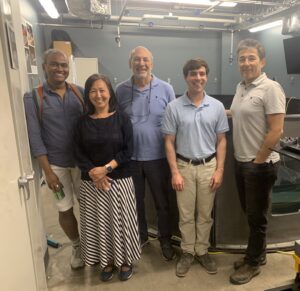
From left to right:
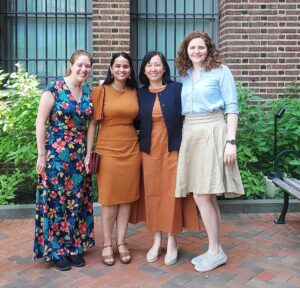
We are thrilled to announce that we are co-organizing an IROS 2023 workshop titled: Robotics for the Blue Economy and Climate Resiliency.
Details about the workshop can be found here.
Organizers: M. Ani Hsieh, Herbert Tanner, Kleio Baxevani, Victoria Edwards, and Thales Costa Silva
